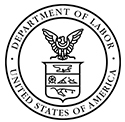OSHA Launches National Emphasis Program For Heat Illness and Injury

The U.S. Department of Labor’s Occupational Safety and Health Administration (OSHA) on April 12 launched a new enforcement program to address heat hazards in the workplace, including grain handling facilities.
During an event in Philadelphia, PA., Secretary of Labor Marty Walsh joined Vice President Kamala Harris to announce OSHA’s first-ever heat illness and injury National Emphasis Program (NEP), which will remain in effect for three years.
As part of the program, OSHA said it will proactively initiate inspections in more than 70 high-risk industries in indoor and outdoor work settings when the National Weather Service has issued a heat warning or advisory for the local area.
On days when the heat index is 80 degrees Fahrenheit or higher, OSHA inspectors and compliance assistance specialists will engage in proactive outreach and technical assistance, the agency stated.
Prior to implementing the NEP, regional and area OSHA offices will engage in outreach to employers in the program’s target industries, including farm product raw material merchant wholesalers and warehousing and storage.
The Occupational Safety and Health Act requires all employers to provide “employment, and a place of employment, free from recognized hazards likely to cause death or serious injury or disease.”
As a result, OSHA can issue a citation if an inspector were to determine that employees are not free from the “recognized hazard” of heat injury and illness via the agency’s NEP.
Therefore, it is suggested (but not required) that each facility have a document showing it is taking practical measures to reduce the risk of heat injury or illness in the workplace.
OSHA published its advance notice of proposed rulemaking on Oct. 27 last year on issues related to heat injury and illness in the workplace.
Heat-related illnesses range from heat cramps to heat exhaustion to heat stroke. NGFA and the Agricultural Retailers Association submitted joint comments in response to the notice, stating: “There is no ‘one-size-fits-all’ approach to address this, as climate varies from region to region and the health and underlying factors that contribute to heat stress vary by employee.”
Source: NGFA
Grain News
- FCA Board Receives Quarterly Report on Conditions in Agriculture and the Farm Credit System
- Growing the CHS Grain Supply Chain
- JDH Breaks Ground on New Grain Handling Facility in Sherman County
- NGFA: NASS Reports Are Critical to Agribusiness Operations
- Cargill And Nestlé Purina Partner on Regenerative Agriculture Adoption to Reduce the Carbon Footprint of Purina Dry Pet Food Products
- NASS Appoints Lance Honig as New ASB Chair
- KSU–GEAPS Grain Elevator Managers Course ... April 30-May 1 ... Manhattan, KS
- NAEGA Publishes Revised Export Contract For FOB at U.S. and Canadian Ports
- ALCIVIA Breaks Ground on Hager City, WI Train-Loading Facility
- CoBank Quarterly Report: Sticky Inflation Puts Federal Reserve on the Horns of a Dilemma